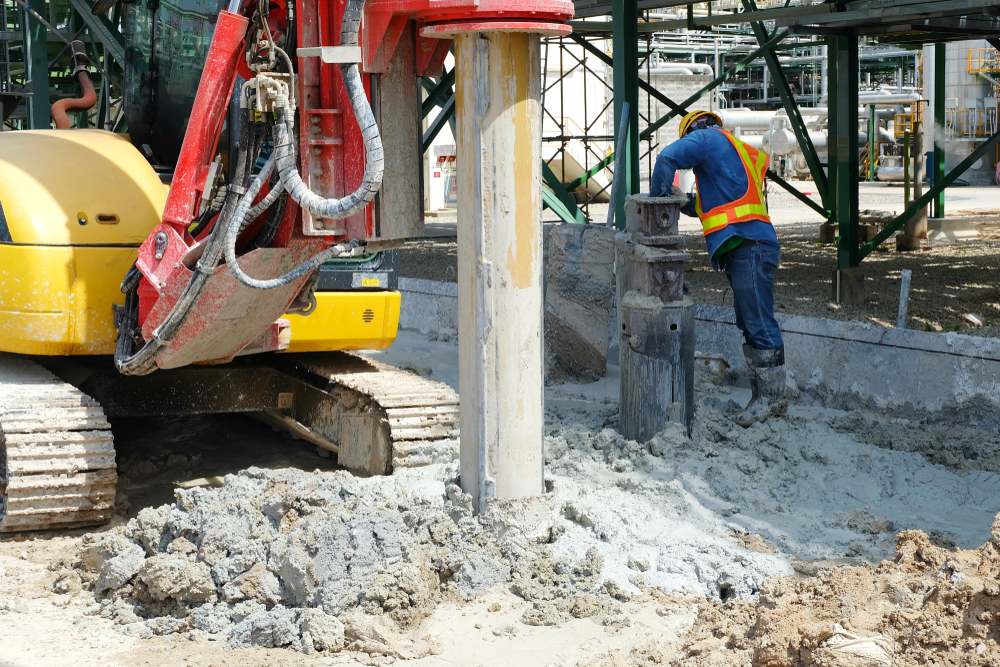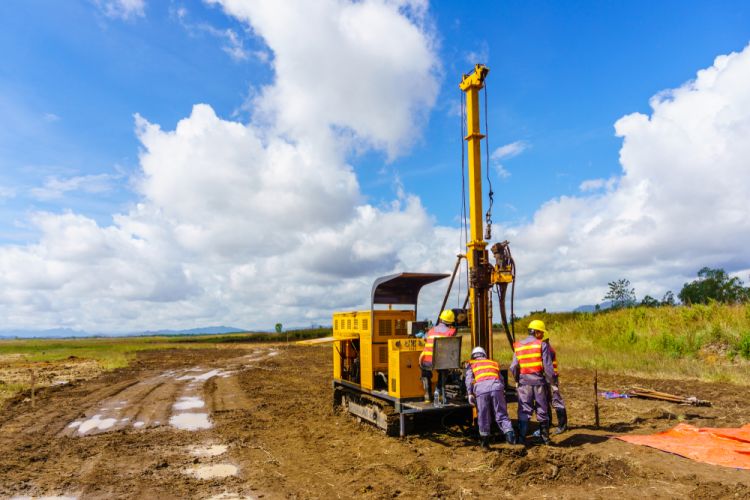See This Report about Geotechnical Engineering For Construction Projects
See This Report about Geotechnical Engineering For Construction Projects
Blog Article
Geotechnical Engineering For Construction Projects Things To Know Before You Get This
Table of ContentsThe Buzz on Geotechnical Engineering For Construction ProjectsGeotechnical Engineering For Construction Projects Things To Know Before You Get ThisAbout Geotechnical Engineering For Construction Projects9 Easy Facts About Geotechnical Engineering For Construction Projects ShownUnknown Facts About Geotechnical Engineering For Construction ProjectsGetting My Geotechnical Engineering For Construction Projects To WorkThe Ultimate Guide To Geotechnical Engineering For Construction ProjectsThe Buzz on Geotechnical Engineering For Construction Projects
Synchronizing with this boosted intricacy comes geological and environmental factors that influence the design of the structure, which is probably one of the most fundamental part of any kind of growth. People need to trust that structures, bridges, and highways will stand the test of time. A Geotechnical designer advises on exactly how a framework can best be supported giving its one-of-a-kind scenarios What's concealed below the surface area of the ground is likely one of the most crucial piece of details that a Geotechnical Designer wants.These examples are after that evaluated by the laboratory to figure out dirt make-up (Geotechnical Engineering for Construction Projects). The break down of sand, silt, clay, and other materials present in the dirt, aids the designer establish what unique features the site has and what the effects of those may be. Of training course dirt structure is just one test that can be done on samples
Indicators on Geotechnical Engineering For Construction Projects You Need To Know
Based upon these examinations, there might be extra soil borings that are drilled, or the designer might have enough details from the initial tests to make a referral to the client on exactly how ideal to continue with their job. Outcomes are usually reported with borings logs which show the soil make-up and features at a selection of depths.
Geotechnical engineers are in charge of recognizing the homes of natural deposits and utilizing this understanding to establish safe, cost-efficient layouts for building tasks. It is an important part of any type of civil engineering job, as it is used to determine the viability of a site for building and to guarantee the framework's safety.
This consists of doing lab tests on the examples and utilizing geophysical techniques such as seismic refraction and electric resistivity surveys. This data is made use of to assess the site's suitability for building and to establish the sort of foundation that need to be used. Geotechnical design evaluates dirt conditions, determines possible dangers, chooses an appropriate structure system for the proposed framework, and establishes the very best foundation style for a given task.
All about Geotechnical Engineering For Construction Projects
The framework might become unstable or collapse without proper dirt stabilisation, causing pricey repairs and potential injury. The stablizing procedure includes utilizing different techniques to enhance the stability of the soil, such as compaction, grouting, and the addition of reinforcing products. Without soil stablizing, the threats related to building projects would be a lot higher, and the outcomes much less trusted.
It is a procedure made use of to improve the homes of dirts. Geotechnical engineers conduct site examinations to examine the dirt's buildings and identify prospective risks. They additionally design foundations and other frameworks that need to be improved the website, taking into consideration the dirt's characteristics. They develop and carry out dirt stabilization strategies, such as including cement, lime, or various other maintaining representatives, to boost the dirt's strength and stability.
Facts About Geotechnical Engineering For Construction Projects Uncovered
Geotechnical engineers are necessary in helping to make sure that soil stabilization is done appropriately to ensure that the framework is safe and secure. Geotechnical design is also used to analyze dirt problems and determine potential threats. This consists of assessing prospective flooding, landslides, and other all-natural calamities that could impact the structure.
Geotechnical designers utilize this expertise to do website investigations, soil, and rock testing, and to analyze the results to figure out the suitable design specifications for a job. This details is used to make certain that the structure, maintaining walls, inclines, and other frameworks built on or within the subsurface materials have adequate stability and resistance to exterior lots, such as quakes, wind, and water.
These frameworks need a deep understanding of the habits of the subsurface products, along with the ability to handle the impact of excavation and building and construction on the surrounding setting. Geotechnical engineers use their expertise to establish the appropriate design parameters for these structures, such as the dimension best site and shape of the passage, the toughness of the supporting rock, and the type and quantity of assistance required.
Along with the style and building and construction of structures, geotechnical design likewise plays an essential role in the rehab and maintenance of existing frameworks. As structures age, they might experience destruction or other problems that impact their security and performance. Geotechnical designers use their know-how to evaluate the condition of these frameworks, recognize the reasons for the troubles, and create methods to address them.
The 7-Minute Rule for Geotechnical Engineering For Construction Projects
In this write-up, I will discuss the role of geotechnical engineering and the types of problems geotechnical engineers address. Geotechnical designers (geotechs) are associated with almost every kind of civil engineering job. Besides, every framework is sustained by dirt or rock unless it is floating, flying, or dropping.
Geotechs are normally most included at the start of a task. Geotechnical Engineering for Construction Projects. Several of the jobs that a geotech might be accountable for are investigating subsurface problems, establishing needed laboratory screening of soil and rock, interpreting the subsurface exploration outcomes, and creating records that document the site problems and provide referrals for structures, fill specifications, slope stability, etc
It is not unusual for geotechnical designers to specialize in just one of the locations listed above and examine that subject their whole occupation. Geotechnical engineering is an important element of any civil design project. No matter just how fantastic a structure is developed, it will certainly not be excellent for long if the foundation is insufficient.
The Ultimate Guide To Geotechnical Engineering For Construction Projects

Frequently, things that may not appear important become crucial years later on when problems emerge. One last point to bear in mind: geotechnical engineering is married to geology. No issue just how excellent your engineering know-how is, if something important is missed out on in the geologic characterization at a site, your proficiency might not conserve you.
Jese lives in West Virginia with his spouse and child. He delights in creeping about on any landslide he can find and investing time fly fishing on the water. He can be found on LinkedIn. I wish you enjoyed this week's post by guest author Jese Vance. If you want your firm perhaps signing up with the Civil Design Collective, please contact blog us here or call us at 800-920-4007. I wish you'll join us.
Fascination About Geotechnical Engineering For Construction Projects

It is essential to design the foundation to stand up to natural and man-made lots. Lots can be upright or side. It is essential to understand the published here dirt problem prior to developing the type and deepness of structure needed for the framework. In order to recognize the subsurface soil condition, a geotechnical examination is needed.
The Basic Principles Of Geotechnical Engineering For Construction Projects
When the test results come, the Geotechnical Designer analyses the record, which lays out the soil and rock buildings groundwater condition and the linked risks. The kind of structure called for to construct the structure is after that figured out. Based on the recommendation of the Geotechnical Designer, the architectural engineer then designs the structure.
Report this page